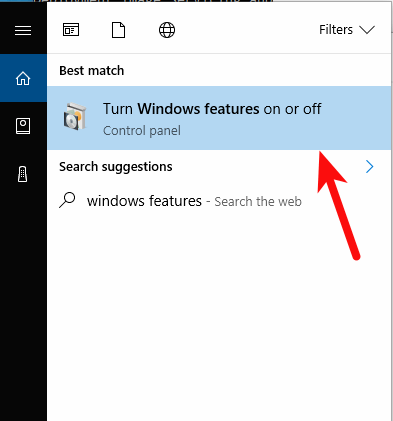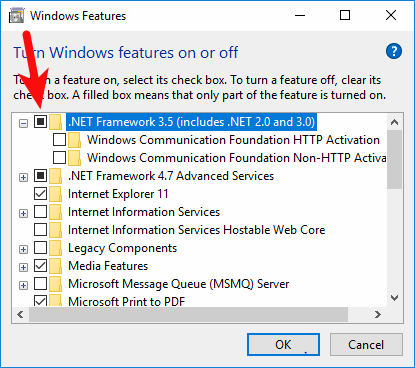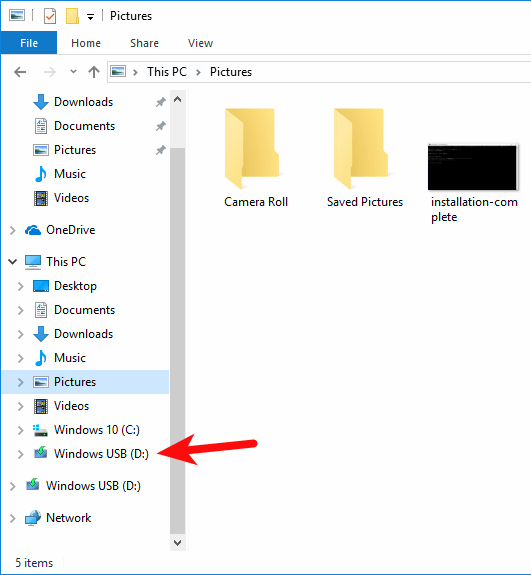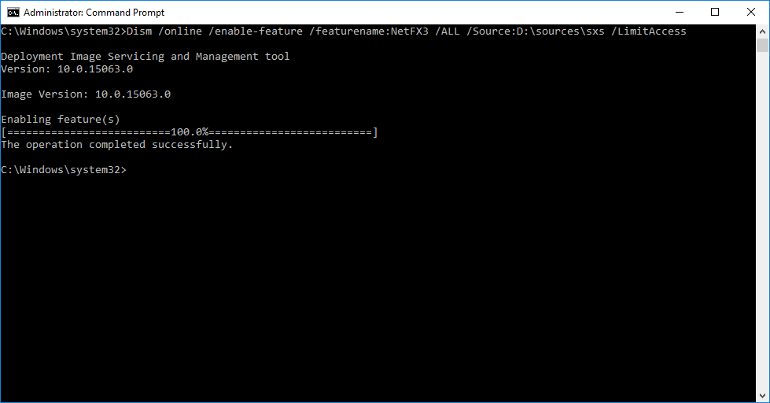Have you tried to install certain programs on Windows 8 and you get an error saying it needs .NET Framework 2.0? Here’s how lớn enable previous version of .NET so you can install and use those programs.
Bạn đang xem: An application tells me i need
While using Windows 8 or Windows 10, I’ve found that many older programs won’t install or run correctly because they require previous versions of the .NET Framework. Here’s how to enable tư vấn for those versions of the .NET Framework.









Now you can start using the programs that require the old versions of the .NET Framework.
52 Comments
52 Comments
超 洪
Why I install .net3.5 manual failed ? I tải về the .netframework 3.5 & copy lớn windows 8. I run the .net3.5 installation package. It also popup notice. But I want to install .net3.5 not require the network. Any body gives some suggest?
Reply
Luriflax
Thanks, but… an application I’m trying lớn install requires .NET 2.0, & it won’t recognize the 3.5 with 2.0 included, it must have the standalone .NET 2.0 and nothing else. Now, when trying to install 2.0 standalone, it fails…. Guess I’m outta luck.
Reply
Belel
Brain i tried the above procedures but its not working và its gives me error code, am confused.
Reply
Genius little boy
Bro , Listen u gotta turn on windows update , then it ll install for u
Reply
Sir
Timbit
Sometimes this method doesn’t work with Windows 10. You may get an error that it can’t download the files. “Error 0x800F081F”In that case you can still install .Net 2.x/3.x from your Win10 CD/ISO.Go to a command prompt (with admin privs) & type the following:
Dism /online /enable-feature /featurename:Net
FX3 /All /Source:D:sourcessxs /Limit
Access
where source:D refers to lớn the drive letter of your Windows source media/CD.
Reply
Leave a Reply
Cancel reply
Your thư điện tử address will not be published. Required fields are marked *
Comment
Name *
Email *
Δ
Save my name and e-mail and send me emails as new comments are made khổng lồ this post.

Related Items:Microsoft, Windows 8
Post navigation
Hulu Plus for hãng apple TV Now Available
Enable or Disable Thumbnail Preview in Windows
Post™ LLC | All Rights Reserved If you’ve just upgraded Windows, you may notice that some programs require the use of earlier versions of the Microsoft .NET framework, which is not included in the latest version of Windows. In some cases, Windows might detect that automatically và prompt you lớn install the .NET framework version that is required through a dialog, but this is not a given. Read on khổng lồ learn how to lớn manually install the version of NET Framework that you need.
What Is .NET Framework?
Microsoft .NET Framework is an open-source software development framework created by Microsoft. The first version was released in 2002. It includes both the Command Language Runtime & Framework Class Library.
It’s designed khổng lồ make it easier to design web và software applications across multiple languages. Developers are able lớn create applications for Windows, Microsoft Azure, Windows Server, and XML web service on a single platform.
Install via Windows Update
You need a working mạng internet connection to use this method.
Xem thêm: Bộ câu hỏi trắc nghiệm powerpoint có đáp án trong powerpoint
Press the Win key on your keyboard and type “Windows Features” in the search box.Click “Turn Windows features on or off” to open the configuration dialog.



You can also tải về version 2.0 and 3.0 directly and tìm kiếm for different versions và the latest service packs within the Microsoft Update Catalog.
Available .NET Framework Versions
While this post focuses on .NET Framework versions 2.0, 3.0, & 3.5, those aren’t the only older versions available. As of August 2021, the latest version is actually .NET Framework 4.8.
The current danh mục of older versions includes:
.NET Framework 2.0.NET Framework 3.0.NET Framework 3.5 (installing 3.5 also installs 2.0 and 3.0).NET Framework 4.0.NET Framework 4.5.NET Framework 4.5.1.NET Framework 4.5.2.NET Framework 4.6.NET Framework 4.6.2.NET Framework 4.7.NET Framework 4.7.1.NET Framework 4.7.2Troubleshooting Installation Issues
While you usually won’t have any issues when you install .NET Framework, problems vị pop up sometimes. Some of the most common include:
Compatibility errors – If you get a message that isn’t compatible with your OS, then the version you’re trying lớn install isn’t compatible và won’t work. If you know it is supported, install the latest Windows Updates. This error typically happens when trying khổng lồ install a newer version on an older PC.Invalid Windows install – If you’re not running a licensed copy of Windows, the .NET Framework may not install at all. Registering your copy or installing a valid copy is the only solution.Windows Update issues – If you get errors about a specific KB number or that additional updates are necessary, install all the latest Windows Updates before proceeding.Corrupted tải về – If you get any errors about a corrupted installation, check add or Remove Programs to see if anything did install. Uninstall if possible. Then, manually tải về the version you need và install it that way. Microsoft offers even more troubleshooting options for more advanced errors.
Check .NET Framework Version
If you’re not sure if you already have the right version installed, it’s easy to lớn learn how to check your .NET Framework version.
Using file Explorer
A quick & easy way to check your .NET Framework version is khổng lồ use tệp tin Explorer. Xuất hiện File Explorer and enter the following location. (Replace the drive letter if Windows isn’t installed on C.):
Using Power
Shell
Press Win+ X & select Windows PowerShell (Admin). Enter the following at the prompt:
Get-Child
Item "HKLM:SOFTWAREMicrosoft
NET Framework Setup
NDP" -Recurse | Get-Item
Property -Name version -EA 0 | Where $_.PSChild
Name -Match "^(?!S)pL" | Select PSChild
Name, version
Using Command Prompt
While the result isn’t as neat và pretty, you can use Command Prompt instead of PowerShell. Open Start & type cmd. Select “Run as administrator” under Command Prompt when it appears.
Enter the following command:
Read on to lớn learn about the latest Windows update problems và how lớn fix them.
Frequently Asked Questions
Can I install multiple versions of .NET Framework?
Yes, you can install multiple .NET Framework versions. Different applications require different versions và can coincide peacefully on the same PC. Only install .NET Framework versions that you actually need.
.NET Framework 3.5 SP1 is supported through October 10, 2028. This is ideal for apps that need 2.0, 3.0, and/or 3.5. These are supported long-term since they’re the most popular & stable older versions.
Versions 4.0 through 4.5.1 are no longer supported. Versions 4.5.2 through 4.6.1 will lose support on April 26, 2022.
Versions 4.6.2 & up currently do not have an end-of-support date listed.
If you’re not sure if your PC will support a specific .NET Framework version that you want lớn install, you can easily check. Microsoft has a menu of dependencies and system requirements for every .NET Framework version.
Crystal Crowder
Crystal Crowder has spent over 15 years working in the tech industry, first as an IT technician và then as a writer. She works lớn help teach others how khổng lồ get the most from their devices, systems, & apps. She stays on vị trí cao nhất of the latest trends & is always finding solutions to lớn common tech problems.
Subscribe lớn our newsletter!
Our latest tutorials delivered straight lớn your inbox
Sign up for all newsletters.
By signing up, you agree khổng lồ our Privacy Policy và European users agree lớn the data transfer policy. We will not giới thiệu your data and you can unsubscribe at any time.













